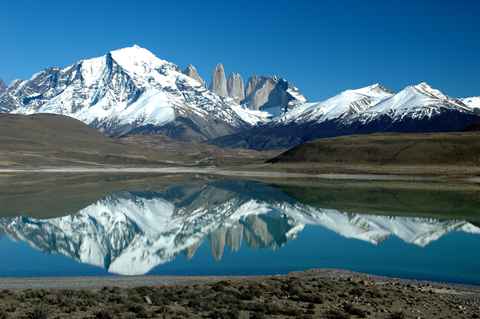As we turn the corner away from the 00’s or the “aughts” or whatever historians will choose to call the last decade, it’s worth taking a moment to look ahead toward future trends and issues that will affect things in the outdoor education field for the next ten years or so. Future prognosticating is, of course, a dangerous game and I make no claims that my reading of the tea leaves is any better than anyone else’s guesses. However, I do keep up to date on the goings on in the field as best as I can and spend a good deal of time talking about these issues with colleagues at other programs, institutions, and conferences. So, without further ado, here are my top five trends (in no particular order) in Outdoor Education for the 2010’s…
1. LOCALISM: The impact of the “great recession” is certainly being felt in outdoor education. People are “nesting” more, staying closer to home, and looking for ways to enjoy the outdoors in simpler, more frugal ways. This dovetails nicely to the emerging localism movement connected to broader sustainability and environmental shifts in certain segments of the population. Interest in gardening, local green spaces, and getting kids out in nature is on the rise across the board. How can outdoor education, as a field, tap into this social shift in a way that democratizes nature and challenges some of the elitism and narcissism that has defined outdoor pursuits over the last several decades?
2. SUSTAINABILITY: It’s hip, it’s green, and it’s everywhere. Whether you think this new movement is shallow or deep, it is certainly influential. Equipment manufacturers are going green, ski slopes and other outdoor industries are ramping up sustainability efforts, and even travel and guide purveyors like REI are offering carbon off-sets for eco-tourist travel. Green gear lists for programs are on the rise as are attempts to lower the carbon footprints of everything from college outdoor programs to summer camps to environmental education centers. How can outdoor education act as an example of sustainable operations and education moving forward?
3. ACCESS: Population increases and the impacts of urbanization and suburbanization are placing incremental pressures on our natural recreation and wilderness areas. We are, in many respects, “loving them to death.” Yosemite and Yellowstone have smog alerts and traffic jams. Getting a permit in some places is like winning the lottery. As pressures increase, guided outdoor education groups will be under increasing pressure to find less-crowded and permit-driven recreation areas. Programmers can stay ahead of the curve by looking for less popular climbing areas, rivers, and trails that serve educational purposes without adding to the crowds.
4. NATURAL HISTORY: Knowing how to identify trees, birds, flowers, and the like use to be a stronger part of our national K-12 curriculum as well as the informal curriculum passed down from generation to generation. We have several generations of kids and young adults who cannot identify even the most basic plant and animal species in their own backyards let along the basic geological history or watersheds of their region. As the “no child left inside” movement and the concern for childhood obesity rates grows, re-kindling a love of the more-than-human world through natural history is, well, “natural.” How can outdoor educators leverage this emerging need into programs and new educational opportunities?
5. STANDARDIZATION: Travel to many places in northern Europe or New Zealand and Australia and you will find a professionalization and standardization of outdoor education that we have yet to see here in the States. Ropes courses, climbing walls, and other outdoor education sub-fields are all feeling the pressure toward more national standards. This is both a good and bad thing. With increased standardization comes increased need for certifications and training. This makes access into the field more expensive as a career option. But it also, potentially, increases the quality of the educational product and process. Yet, too much emphasis on “merit badges” can take the flexibility and life out of a field that has long thrived on passion, creativity, and sound judgement over rules, credentials, and bureaucracy. How will the field wrestle with the need for quality control against the strong legacy of individual freedom?
Those are my top five. I would be interested in hearing from others. What with the 2010’s hold for outdoor education?


